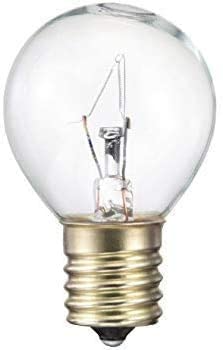In a world filled with ever-evolving lighting options, one classic continues to capture our fascination and add a touch of retro charm to our spaces—the lava lamp. At the heart of this mesmerizing decorative piece lies a crucial element: the lava lamp light bulb. Join us as we embark on a journey to explore the intricate world of lava lamp bulbs, uncovering their history, functionality, and impact on creating that iconic lava flow.
Birth of the Lava Lamp Phenomenon
The lava lamp light bulb, also known as the "motion lamp," emerged during the counterculture era of the 1960s. Inventor Edward Craven Walker's mesmerizing creation combined art, science, and a touch of whimsy, resulting in a captivating display of flowing, colorful blobs suspended in a liquid. The specially designed lava lamp bulb was central to this captivating display, pivotal in making the magic happen.
Science Behind Lava Lamp Light Bulbs
Understanding the science behind lava lamp bulb sheds light on the magic they create. These bulbs are more than just sources of illumination—they are integral to the lamp's unique behavior. The lava lamp bulb's heat emission creates the lava flow effect. As the bulb heats the wax mixture within the lamp, it causes the wax to expand and become less dense than the surrounding liquid. This less dense wax rises to the top, cools down, and then sinks back down, perpetuating the mesmerizing motion.
Choosing the Right Lava Lamp Bulb
When it comes to selecting a lava lamp replacement bulb, there are a few factors to consider to ensure you achieve the desired ambiance:
- Wattage: Lava lamp bulbs come in various wattages. The wattage you choose can affect the intensity of the light emitted and the rate at which the lava flows. Opt for a wattage that matches the size of your lamp and the ambiance you want to create.
- Type of Bulb: Due to their heat emission, traditional incandescent bulbs are often the go-to choice for lava lamps. However, energy-efficient options like halogen and some LED bulbs can also be used, provided they generate enough heat to maintain the lava's flow.
- Bulb Shape and Size: Ensure your bulb fits properly within your lava lamp's socket. The bulb's shape and size can impact the heat distribution within the lamp.
Caring for Your Lava Lamp Bulb
To ensure your lava lamp continues to create its enchanting display, proper maintenance is key:
- Regular Cleaning: Dust and debris can accumulate on the globe and the bulb, affecting the lamp's aesthetics and functionality. Gently clean the globe and the bulb to maintain optimal performance.
- Replacement: Lava lamp bulbs have a finite lifespan. When your lamp appears dimmer or the lava flow becomes sluggish, it's likely time to replace the bulb.
Conclusion
Lava lamps are more than just quirky decorations; they are a testament to the creative fusion of science and design. The lava lamp bulb's role in generating heat and light is crucial to the captivating wax flow within the lamp. By choosing the right bulb, understanding its impact, and caring for it, you can keep your lava lamp shining bright and enchanting your space for years. So embrace the retro charm, and let your lava lamp light up your life in the most mesmerizing way possible.
